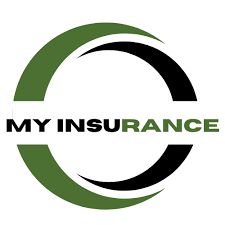Introduction
In the digital age, convenience, accessibility, and efficiency have become the pillars of excellent service delivery across industries. The insurance industry, traditionally perceived as paper-heavy and time-consuming, has undergone a significant transformation. At the heart of this evolution is the “My Insurance Portal” concept—a centralized digital platform where policyholders can manage, review, and optimize their insurance policies with ease. Whether you hold health, auto, home, life, or business insurance, an insurance portal provides the tools and information needed to stay informed and in control.
This 3,000-word article explores the benefits, features, functionalities, and future of insurance portals. It provides a roadmap for users seeking to leverage digital tools to simplify their insurance experience while ensuring maximum protection.
Chapter 1: Understanding the Insurance Portal
A “My Insurance Portal” is a secure online interface offered by insurance companies to their customers. It allows users to:
- Access policy documents
- Make premium payments
- Submit and track claims
- Update personal information
- Communicate with customer service
- Receive real-time alerts and updates
These portals are accessible via desktops and mobile devices, providing 24/7 access to policy information and services. They bridge the gap between traditional insurance management and the demands of modern digital consumers.
Chapter 2: Key Features of My Insurance Portal
- Dashboard Overview A personalized dashboard offers an at-a-glance view of all active policies, payment statuses, upcoming due dates, and recent activity.
- Policy Management Users can review coverage details, renew policies, request changes, and even compare available upgrades or new policy options.
- Claims Processing Filing a claim is streamlined with online forms, document uploads, and progress tracking, eliminating the need for phone calls or physical visits.
- Billing and Payments Portals offer flexible payment options including one-time payments, auto-debits, and payment history reports.
- Document Center All critical documents like policy contracts, claim forms, and payment receipts are stored digitally for easy retrieval.
- Customer Support Integration Users can chat with representatives, submit inquiries, or schedule calls for more complex issues.
- Mobile App Accessibility Many portals are paired with mobile apps, ensuring users can manage their insurance on-the-go.

Chapter 3: Benefits of Using My Insurance Portal
- Convenience: Manage multiple policies from one place, anytime.
- Speed: File claims, pay premiums, and update info within minutes.
- Transparency: Immediate access to policy details and claim status.
- Security: Advanced encryption and secure logins protect personal and financial data.
- Cost-Effectiveness: Reduce paperwork and mailing costs.
- Environmentally Friendly: Digital documentation reduces carbon footprints.
Chapter 4: How to Register and Use an Insurance Portal
- Registration
- Visit the insurance company’s website
- Locate the portal sign-up section
- Enter personal details and policy number
- Set up a secure password and enable two-factor authentication
- First-Time Login and Setup
- Verify identity through email or phone
- Customize dashboard preferences
- Upload any additional required documents
- Ongoing Usage Tips
- Set reminders for policy renewals
- Check monthly statements
- Use chat support for clarifications
Chapter 5: Real-Life Applications and User Experiences
- Case Study 1: A busy entrepreneur managing commercial and health insurance via a single platform.
- Case Study 2: A family accessing bundled auto and home insurance policies, monitoring coverage and discounts.
- Case Study 3: An elderly user utilizing the portal’s accessibility features for health claim submissions.
These stories underline how a well-designed portal can simplify complex insurance management.
Chapter 6: Challenges and Considerations
While insurance portals are powerful tools, they do come with considerations:
- Digital Literacy: Some users may need assistance navigating portals.
- Data Security: Continuous investment in cybersecurity is essential.
- Interoperability: Integration across different insurers or policy types can be limited.
- Customer Support: Human interaction may still be necessary for certain tasks.
Insurance providers must address these challenges to ensure inclusivity and reliability.
Chapter 7: Future Trends in Insurance Portals
- AI and Chatbots
- Predictive support and intelligent claim resolution.
- Blockchain Integration
- Enhancing transparency and reducing fraud.
- Personalization
- Tailored dashboards and product recommendations.
- Multi-Policy Management
- Unified views for policies across different providers.
- Wearable and IoT Integration
- Auto-adjusting health or vehicle insurance based on real-time data.
Conclusion
The “My Insurance Portal” represents a pivotal shift in the way individuals and businesses interact with their insurance providers. As technology continues to evolve, so too will these digital platforms—making them more intuitive, secure, and responsive to individual needs. Whether you’re a seasoned policyholder or just beginning your insurance journey, embracing a digital insurance portal can significantly enhance your experience.
By understanding and utilizing the features outlined in this article, users can take greater control over their insurance portfolios, ensuring peace of mind and financial security in an increasingly digital world.
